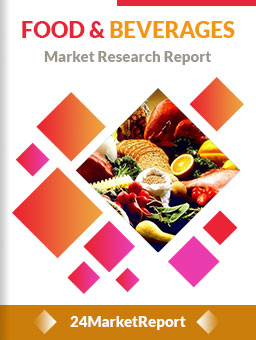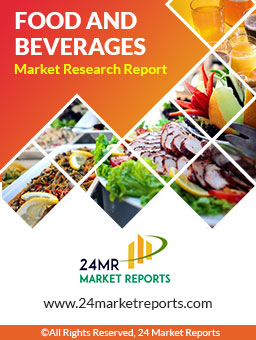
Download FREE Report Sample
Download Free samplePrebiotics are fibers which cannot be absorbed or broken down by the body and therefore serve as a great food source for probiotics, in particular the Bifidobacteria genus, to increase in numbers. Prebiotics by nature do not stimulate the growth of bad bacteria or other pathogens; the official definition of prebiotics is: "non-digestible food ingredients that beneficially affect the host by selectively stimulating the growth and/or activity of one or a limited number of bacteria in the colon, which can improve host health."
Prebiotics Market aims to provide a comprehensive presentation of the global market for Prebiotics, with both quantitative and qualitative analysis, to help readers develop business/growth strategies, assess the market competitive situation, analyze their position in the current marketplace, and make informed business decisions regarding Prebiotics. Prebiotics Market contains market size and forecasts of Prebiotics in global, including the following market information:
Global Prebiotics Market Revenue, 2018-2023, 2024-2029, ($ millions)
Global Prebiotics Market Sales, 2018-2023, 2024-2029, (MT)
Global top five Prebiotics companies in 2022 (%)
The global Prebiotics market was valued at US$ 157.5 million in 2022 and is projected to reach US$ 217.1 million by 2029, at a CAGR of 4.7% during the forecast period. The influence of COVID-19 and the Russia-Ukraine War were considered while estimating market sizes.
Europe is the largest manufacture region in global market. The follower is China. They account for more than 54% market share.
The main manufacturers are Beneo, TATE & LYLE, FrieslandCampina, Meiji, Danisco (DuPont), Hayashibara, Sensus, Matsutani, Yakult, Cosucra, Ingredion, Roquette, Nisshoku, Nissin Sugar, CJ CheilJedang, Longlive, Bailong chuangyuan, Baolingbao Biologgy, Quantum Hi-Tech, Tailijie etc. The top 5 companies occupied about 34% market share.
We surveyed the Prebiotics manufacturers, suppliers, distributors and industry experts on this industry, involving the sales, revenue, demand, price change, product type, recent development and plan, industry trends, drivers, challenges, obstacles, and potential risks.
Total Market by Segment:
Global Prebiotics Market, by Type, 2018-2023, 2024-2029 ($ Millions) & (MT)
Global Prebiotics Market Segment Percentages, by Type, 2022 (%)
Fructose -oligosaccharide (FOS)
Galacto-oligosaccharides (GOS)
Synanthrin
Polydextrose
Isomaltooligosaccharide (IMO)
Resistant Dextrin
Others
Global Prebiotics Market, by Application, 2018-2023, 2024-2029 ($ Millions) & (MT)
Global Prebiotics Market Segment Percentages, by Application, 2022 (%)
Food & Beverage
Infant Nutrition
Others
Global Prebiotics Market, By Region and Country, 2018-2023, 2024-2029 ($ Millions) & (MT)
Global Prebiotics Market Segment Percentages, By Region and Country, 2022 (%)
North America
US
Canada
Mexico
Europe
Germany
France
U.K.
Italy
Russia
Nordic Countries
Benelux
Rest of Europe
Asia
China
Japan
South Korea
Southeast Asia
India
Rest of Asia
South America
Brazil
Argentina
Rest of South America
Middle East & Africa
Turkey
Israel
Saudi Arabia
UAE
Rest of Middle East & Africa
Competitor Analysis
The report also provides analysis of leading market participants including:
Key companies Prebiotics revenues in global market, 2018-2023 (Estimated), ($ millions)
Key companies Prebiotics revenues share in global market, 2022 (%)
Key companies Prebiotics sales in global market, 2018-2023 (Estimated), (MT)
Key companies Prebiotics sales share in global market, 2022 (%)
Further, the report presents profiles of competitors in the market, key players include:
Beneo
TATE & LYLE
FrieslandCampina
Meiji
Danisco (DuPont)
Hayashibara
Sensus
Matsutani
Yakult
Cosucra
Ingredion
Roquette
Nisshoku
Nissin Sugar
CJ CheilJedang
Longlive
Bailong chuangyuan
Baolingbao Biologgy
Quantum Hi-Tech
Tailijie
Outline of Major Chapters:
Chapter 1: Introduces the definition of Prebiotics, market overview.
Chapter 2: Global Prebiotics market size in revenue and volume.
Chapter 3: Detailed analysis of Prebiotics manufacturers competitive landscape, price, sales and revenue market share, latest development plan, merger, and acquisition information, etc.
Chapter 4: Provides the analysis of various market segments by type, covering the market size and development potential of each market segment, to help readers find the blue ocean market in different market segments.
Chapter 5: Provides the analysis of various market segments by application, covering the market size and development potential of each market segment, to help readers find the blue ocean market in different downstream markets.
Chapter 6: Sales of Prebiotics in regional level and country level. It provides a quantitative analysis of the market size and development potential of each region and its main countries and introduces the market development, future development prospects, market space of each country in the world.
Chapter 7: Provides profiles of key players, introducing the basic situation of the main companies in the market in detail, including product sales, revenue, price, gross margin, product introduction, recent development, etc.
Chapter 8: Global Prebiotics capacity by region & country.
Chapter 9: Introduces the market dynamics, latest developments of the market, the driving factors and restrictive factors of the market, the challenges and risks faced by manufacturers in the industry, and the analysis of relevant policies in the industry.
Chapter 10: Analysis of industrial chain, including the upstream and downstream of the industry.
Chapter 11: The main points and conclusions of the report.

Speak to our Custom Research Team and get the Custom Research in a budget
Custom ResearchFrequently Asked Questions ?
A license granted to one user. Rules or conditions might be applied for e.g. the use of electric files (PDFs) or printings, depending on product.
A license granted to multiple users.
A license granted to a single business site/establishment.
A license granted to all employees within organisation access to the product.
Upto Working 24 to 48 hrs
Upto 72 hrs max - Weekends and Public Holidays
Online Payments with PayPal and CCavenue
Wire Transfer/Bank Transfer
Hard Copy




 Industry Market Size
Industry Market Size SWOT Analysis
SWOT Analysis Industry Major Players
Industry Major Players Revenue Forecasts
Revenue Forecasts Historical and Forecast Growth
Historical and Forecast Growth Profitability Analysis
Profitability Analysis
























